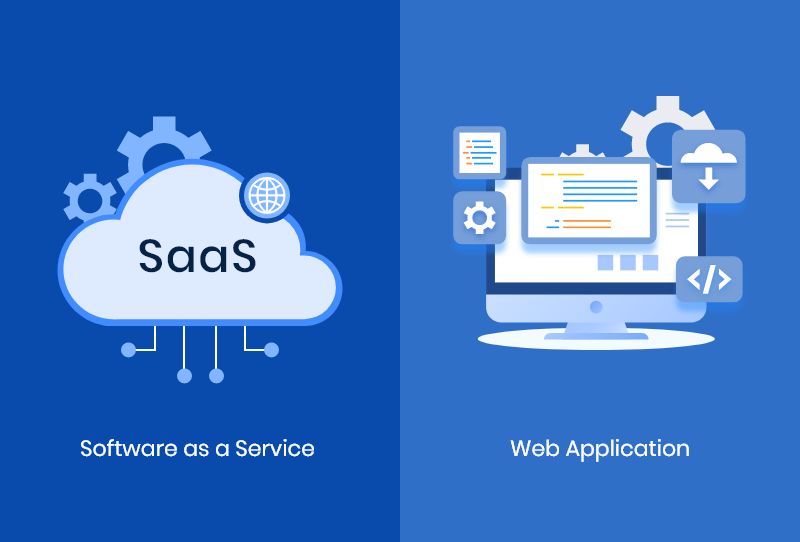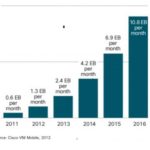SaaS vs Web Apps: Which is Better for Your Business Needs?

Software as a Service (SaaS) and web applications are two popular software delivery models that businesses can use to provide digital services to customers. Both these trends are flourishing in the business world.
According to a report by Allied Market Research, the global SaaS market size is expected to reach $220.21 billion by 2026, growing at a CAGR of 13.1% from 2019 to 2026. Meanwhile, the web application market is expected to reach $77.1 billion by 2025, growing at a CAGR of 10.3% from 2020 to 2025, according to MarketsandMarkets.
While SaaS and web applications do share some similarities, some key differences exist between the two. As Mark Murrell, CEO of Get Maine Lobster, states: “The choice between web and SaaS comes down to control. A company that needs complete control over its software should go with the web, while one that wants less overhead and less responsibility should go with SaaS.”
Going ahead, we will explore the key difference between SaaS and web application in detail to help you decide which model you should go with.
Analyzing the Difference Between SaaS and Web Applications
SaaS (Software as a Service) and web applications are both software delivery models that are accessed via the internet, but they differ in several ways, which we outline against various parameters, as below.
| Aspect | SaaS | Web Application |
|---|---|---|
| Ownership and Hosting | Provider owns and hosts the software | If a customer purchases a license to use the software, the customer typically owns the software and is responsible for hosting it on their own servers or cloud infrastructure. |
| Pricing Model | Subscription-based | One-time payment or subscription-based |
| Customization | Limited customization options | More extensive customization options |
| Scalability | Highly scalable | A bit challenging to scale |
| Maintenance and Support | Provider handles maintenance and support | If the customer owns and hosts the software, they are also responsible for maintaining and supporting the application |
Now that you have a fundamental understanding of saas vs web app, let us go over these ideas in further depth.
Ownership and Hosting
SaaS applications are cloud-based software applications that are owned and hosted by the provider. The customer accesses the software over the internet and pays a subscription fee. The provider is responsible for maintaining, updating, and securing the software, allowing the customer to focus on using the application. This includes SaaS based web applications, which are accessed via a web browser and offer similar benefits as traditional SaaS applications.
In contrast, web applications are owned by the customer and can be hosted in a variety of ways, including self-hosting or using a hosting service. The customer is responsible for maintaining and updating the software, as well as ensuring its security and scalability, while also paying for the hosting service and any additional resources needed to run the application.
Pricing and Payment
SaaS applications offer subscription-based pricing while providers handle maintenance, updates, and security, whereas web applications often have a one-time payment model. SaaS’s pricing tiers cater to different needs, while web apps may not suit ongoing maintenance or support.
Take a peek at the live example to better understand it. Zoom is an example of a subscription-based SaaS product, in which clients pay a recurring cost and the provider maintains and upgrades the programmer. Adobe Photoshop is one example of a high-quality web app development services with a one-time payment pricing model, in which consumers pay to own the product outright and are responsible for its own maintenance and updating.
Need Help with SaaS
Or Web Development?
- Proven
- Transparent
- Dependable
Customization Complexities
In SaaS applications, customization options are often limited to what the provider offers. The provider creates a standardized platform that can be configured to meet the needs of a wide range of customers. While some level of customization may be available, it’s typically limited to features that are commonly requested by customers. Customization in SaaS is typically achieved through configuration rather than development.
In web applications, customization options can be more extensive since customers own the software outright. Customers can modify the software as needed to meet their specific requirements. This level of customization requires development expertise, but it allows for a high degree of flexibility.
Efficiency to Scale
In an end-to-end SaaS app development company, scalability is typically handled by the provider. SaaS providers have the infrastructure and expertise to scale their platforms to meet the needs of a growing customer base. Providers can add capacity as needed, and customers can benefit from economies of scale.
In web applications, scalability can be more challenging. Customers are responsible for scaling their own infrastructure as needed to meet demand. This can require a significant investment in infrastructure and expertise to ensure that the application can handle increased traffic or data volume.
Also read: How to ensure saas scalability?
Support and Maintenance
SaaS providers offer a comprehensive package that includes maintenance, security, and customer support, allowing customers to focus on using the software. Customers can rely on expert teams to handle maintenance, bug fixes, and updates, which can be included in the subscription fee. In addition, SaaS providers typically offer technical support, troubleshooting assistance, and training on how to use the software.
Whereas, web application customers are responsible for maintaining their own software, which can be time-consuming and requires dedicated resources. Support can vary depending on the provider, with some offering support to customers and others leaving them to rely on forums or user communities. This can put the burden of support on the customer, who may need to hire their own team or rely on external resources.
Final Words
SaaS and web applications are two popular software solutions used by businesses worldwide. While both are accessed through the internet, they differ in deployment, pricing, and maintenance.
Finoit technologies, a leading software development company, has extensive expertise in building and deploying cloud-based solutions. Their team of skilled developers can help businesses develop and deliver reliable, scalable SaaS products, while also building and deploying web applications tailored to their specific needs. So, connect with our development team to walk on the right pathway to building a robust SaaS product.
Need Help with SaaS
Or Web Development?
- Proven
- Transparent
- Dependable


